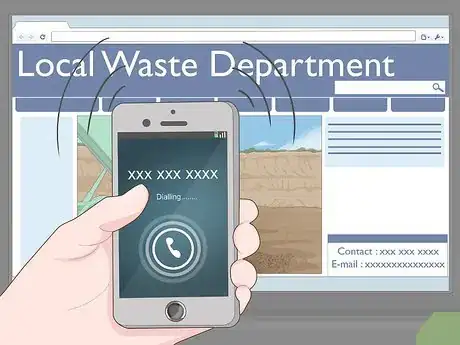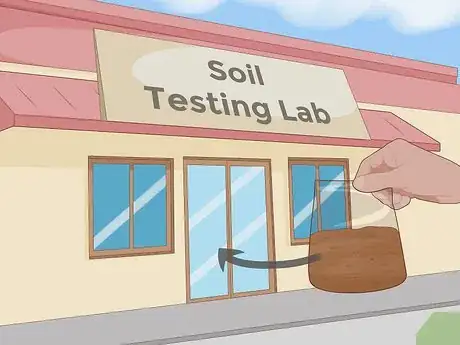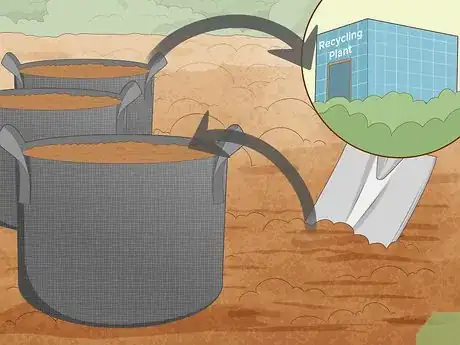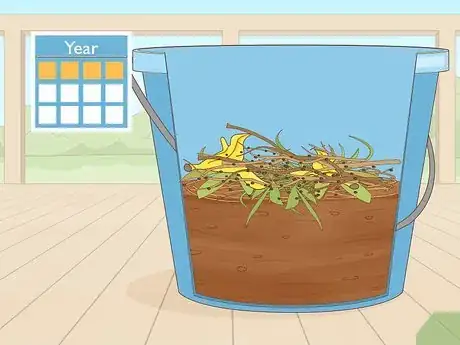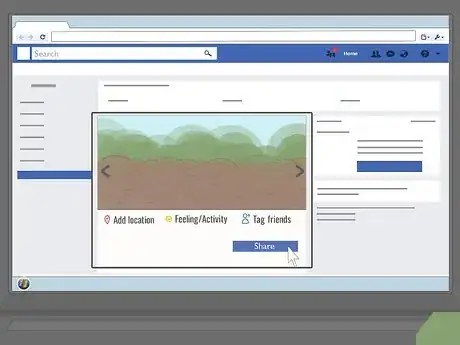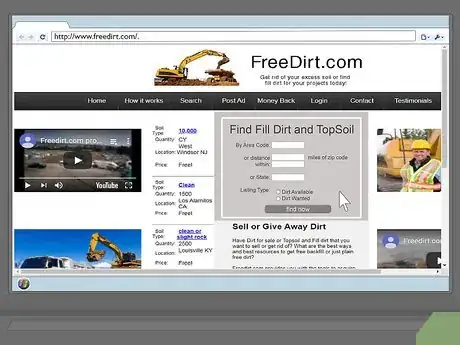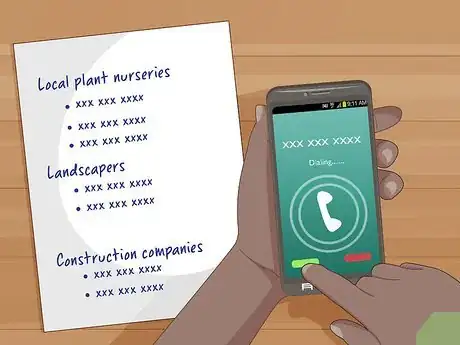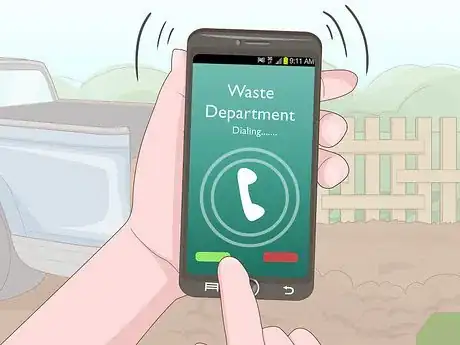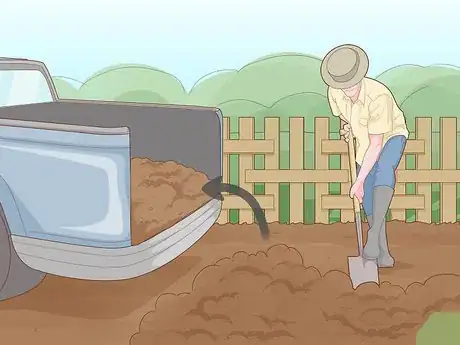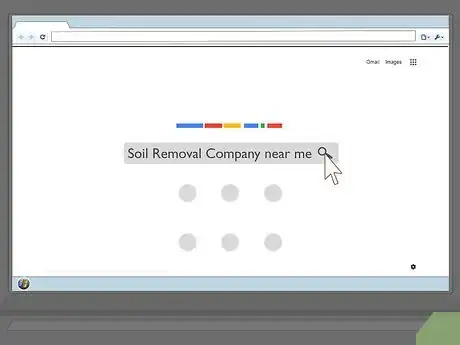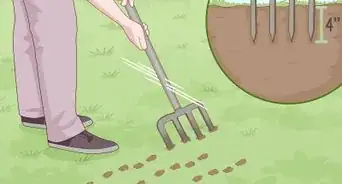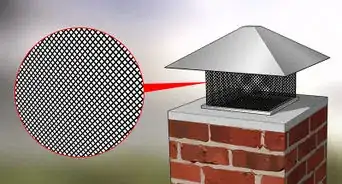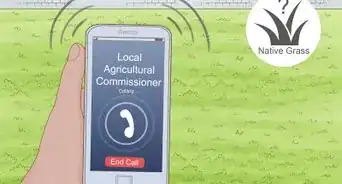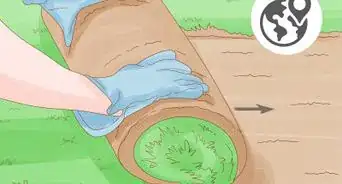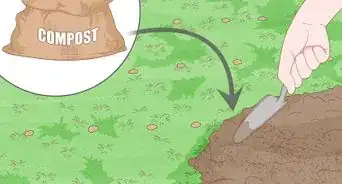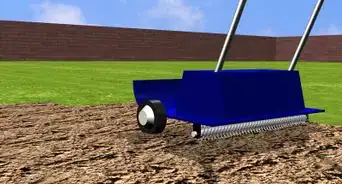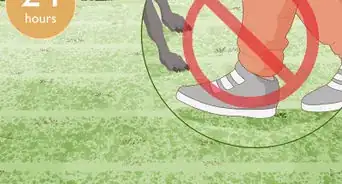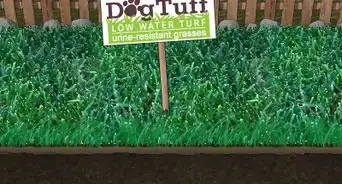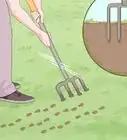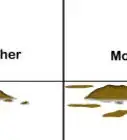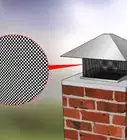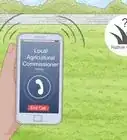This article was co-authored by Grant Wallace and by wikiHow staff writer, Eric McClure. Grant Wallace is a Landscaper and Owner of Grantlanta Lawn in Atlanta, Georgia. With over seven years of experience, he specializes in lawn maintenance and landscape installation. In 2012, he earned his BA from the University of West Georgia. Grant has been profiled in Shoutout Atlanta, Canvas Rebel, and Voyage ATL.
There are 9 references cited in this article, which can be found at the bottom of the page.
This article has been viewed 55,420 times.
Whether you’ve just excavated your garden or finished a large construction project, you may end up with a large amount of soil and no use for it. Ideally, the soil can be recycled or reused, but it probably needs to be tossed in a landfill if it has been mixed with other materials. If your soil isn’t mixed, contact your local waste department to find out if your region has a recycling program for soil. If it doesn’t, post an advertisement online or give your soil to a local plant nursery or landscaping company.
Steps
Recycling Your Soil
-
1Contact your local waste department to find a recycling facility. Most local governments have a special recycling facility for organic or paving materials. Look online to find the contact information for your local waste department and call them. Ask them if they have a dedicated recycling facility where you can take your soil. If they do, ask how the soil needs to be packaged in order for it to be accepted.[1]
- Whether soil qualifies as mixed or not is usually dependent upon the environmental regulations where you live. In unregulated areas, recycling plants typically just inspect the soil by eye.
- Soil that has been exposed to any harmful chemicals, pesticides, or pollutants is mixed for all intents and purposes since it is contaminated. Call your local government to find out what to do with this kind of waste. It typically needs to be destroyed at a specific waste facility.
Tip: You can only recycle unmixed soil. Soil is considered mixed if it has more than an incidental amount of some organic material. For example, a few pieces of crushed stone do not make a soil mixed, but a pile of soil that has been intentionally mixed with a large amount of asphalt is definitely mixed.[2]
-
2Get the soil tested if it’s legally required where you live. In regions with a lot of environmental regulations or sensitive ecosystems, you may need to have the soil tested at a lab before you can drop it off. If this is the case where you live, take or ship a small sample of the soil to the testing facility as directed by your waste department. The testing facility will either clear your soil for recycling or explain why your government’s waste department can’t take it.[3]
- In some regions, the government reuses recycled soil for public projects. If the soil is contaminated or made out of the wrong material, they will not accept it.
Advertisement -
3Fill a bag or truck bed with your soil and take it to the plant. Once you’re cleared to take your soil to a recycling facility, fill strong plastic or cloth bags with the soil and load it into your vehicle. Alternatively, if you have access to a truck, you can simply load the bed of the truck with your soil. Take the soil to the recycling plant and drop it off as directed by the clerk at the recycling plant.[4]
- At some plants, you will need to pay a fee for the recycling service. This fee depends entirely on how much soil you’re recycling. Smaller loads may only cost $100, but a large load may cost over $1,000.
-
4Compost the soil if you don’t have a large amount. Composting refers to the process of letting organic materials break down naturally, usually to help plants grow in a garden. To compost your soil, create a pile in your yard or in a bucket. Fill the pile or bucket with layers of leaves, twigs, grass, food waste, and coffee grounds. Over time, your soil will break down into a black, sand-like material and can be buried or used as a fertilizer in your garden![5]
- Your compost pile or bucket must remain moderately moist for this process to work. During droughts or dry spells, mist the compost with some water to keep it moist.
- It can take 2-4 months for a compost pile to break down completely.
Giving Soil Away
-
1Advertise the soil online to give it away for free. Some people may be interested in using your soil for a gardening project or compost pile. Take a photo of the soil, identify the soil to the best of your ability, and put an advertisement on Craigslist or Facebook Marketplace. Be sure to describe where your soil came from so that gardeners can determine if it’s suitable for their needs. Once someone contacts you to take your soil, give them your address and allow them to pick the soil up.[6]
- It’s important to list the type of soil since gardeners are likely looking for specific types of soil for different plants.
- Gardeners use different types of soil for different plants, shrubs, and landscaping projects. Include as much information as you can to incentivize someone to reach out about your soil.
- You are going to struggle to give away mixed soil. Most people will only want uncontained soil that hasn’t been mixed with large amounts of other materials. Incidental organic matter is typically fine, though.
Tip: The main types of soil are sand, silt, loam, and clay. Clay tends to be thick and orange or red in color. Loam is dark and crumbly. Silt is a little lighter than loam and tends to dry out and become brittle. Sandy soil resembles the sand you find at the beach and tends to have clumps of different sizes.
-
2List a large amount of soil on Free Dirt to give it away. Free Dirt is a popular website for people looking for large amounts of soil. It is free to use and you can even try selling your dirt for money if you’d like. List your ZIP code, the amount of soil that you have, and the type of soil. Once someone contacts you, coordinate their pick up through the website.[7]
- Unless you have some unique soil, you probably won’t find a buyer on the site since so many other people list their dirt for free.
- The amount of dirt you have is quite important if you’re giving away a large amount. Generally speaking, soil weighs 75 pounds per cubic foot (1200 kilograms per cubic meter). Provide an estimate of the soil’s weight so that interested parties can determine if it suits their needs.
- You can visit Free Dirt at http://www.freedirt.com/.
-
3Offer the soil to a plant nursery or landscaping company. If nobody in your area is willing to pick up your soil, call local plant nurseries, landscapers, or construction companies. Ask each person that you call if their company is interested in your soil. Since these businesses go through a lot of soil, they’re often willing to pick up large amounts to supplement their business.[8]
- This is unlikely to work if you have a small amount of soil. These companies typically use a lot of dirt, so they won’t waste their time on a smaller load.
Throwing Mixed Soil Out
-
1Contact your local government if your soil is mixed with other materials. Mixed soil refers to any type of soil that is combined with other materials, like grass, plants, other types of soil, chemicals, or garbage. You cannot recycle mixed soil and most people won’t be interested in it, so you probably need to throw it out. Once you call your local waste department, ask where you can take your mixed soil.[9]
- Whether a soil counts as mixed or not typically differs from government to government. In most cases, a small amount of organic matter is perfectly fine. However, if the soil has been combined with large amounts of anything, it is generally considered mixed.
Tip: Mixed soil is almost always accepted at a landfill specifically designed to handle and store paving and construction materials. You usually can’t take soil to a standard landfill.
-
2Find a landfill in your area and pack your soil in bags. Once you are given the location of a landfill designed for dirt, pack the soil in cloth or strong plastic bags. If you have a truck, simply fill the bed of the vehicle with your soil.[10]
-
3Drop the soil off and pay to have it disposed of if necessary. Drive your soil to the landfill and ask the clerk at the facility where to put your soil. In most cases, you will need to pay a small fee to drop the dirt off.[11]
- The fee ranges from $10-100 most of the time, but it may be more if you have a lot of dirt.
-
4Pay a removal company if the landfill won’t take your soil. If a landfill in your area won’t take your soil and you can’t recycle it or give it away, you’ll need to hire a removal company to pick it up. Look online to find a soil removal company in your area and contact them. Coordinate the pickup and pay to have the soil removed.[12]
- The price of soil removal depends entirely on how much soil you have. It can range from $50-5,000 depending on how much you have.
Expert Interview
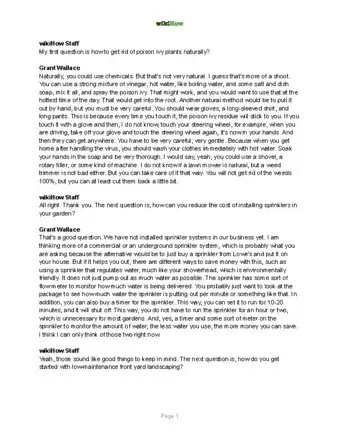
Thanks for reading our article! If you'd like to learn more about disposing of soil, check out our in-depth interview with Grant Wallace.
References
- ↑ https://www2.montgomerycountymd.gov/DepHowDoI/material.aspx?tag=paving-materials&material_key=42
- ↑ https://pcb.illinois.gov/documents/dsweb/Get/Document-77027
- ↑ http://www.oclandfills.com/landfill/soil_disposal
- ↑ https://www.cityofredding.org/departments/solid-waste#!rc-cpage=78368
- ↑ https://www.epa.gov/recycle/composting-home
- ↑ https://www.washingtonpost.com/local/public-safety/she-found-an-ad-for-free-dirt-her-yard-was-buried-by-more-than-100-truckloads/2019/11/05/6be11aaa-ec57-11e9-9306-47cb0324fd44_story.html
- ↑ http://www.freedirt.com/index.cfm
- ↑ http://kernlandscaping.com/disposal/
- ↑ https://www2.illinois.gov/epa/topics/waste-management/waste-disposal/ccdd/Pages/default.aspx
- ↑ https://www2.illinois.gov/epa/topics/waste-management/waste-disposal/ccdd/Pages/default.aspx
- ↑ https://www2.illinois.gov/epa/topics/waste-management/waste-disposal/ccdd/Pages/default.aspx
- ↑ https://www.washingtonpost.com/local/public-safety/she-found-an-ad-for-free-dirt-her-yard-was-buried-by-more-than-100-truckloads/2019/11/05/6be11aaa-ec57-11e9-9306-47cb0324fd44_story.html
